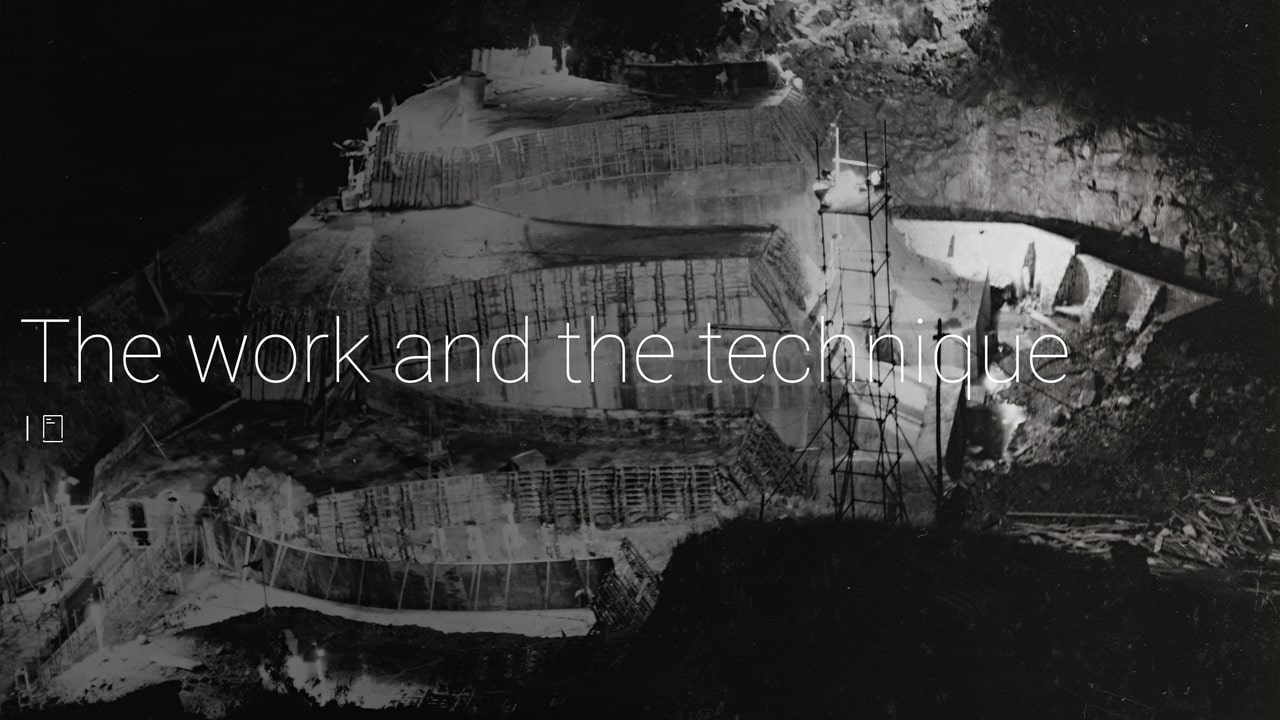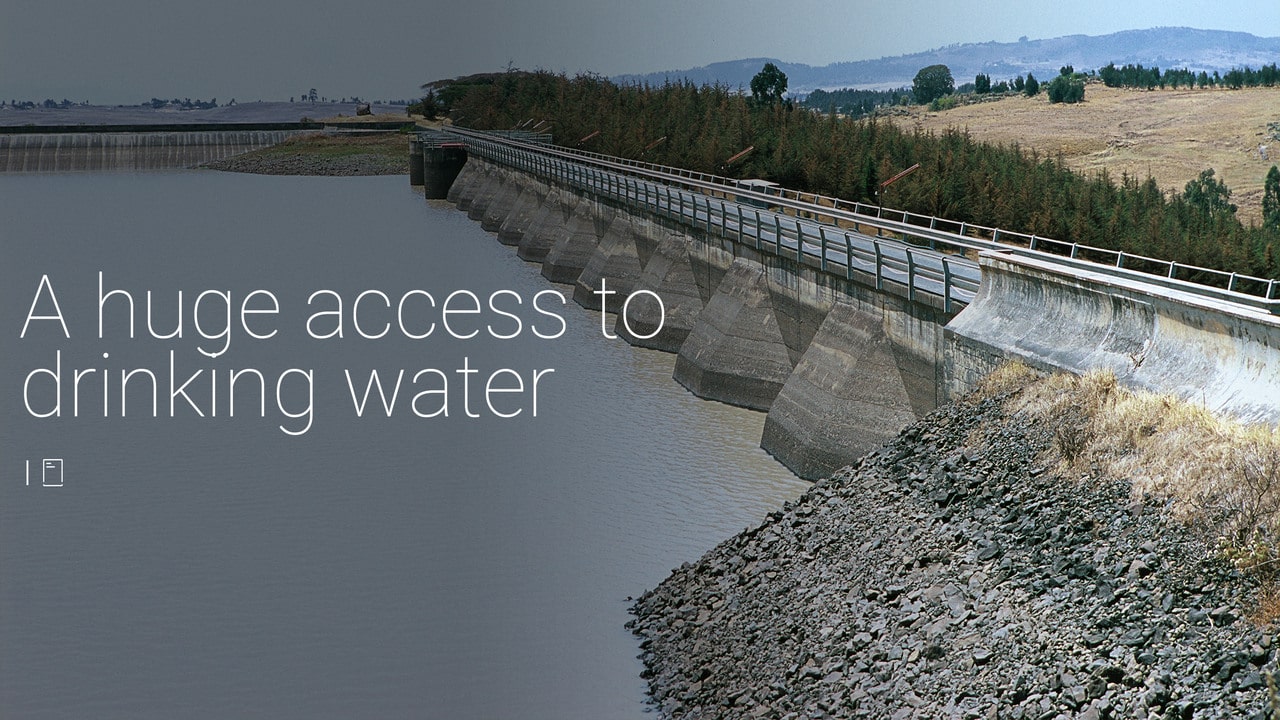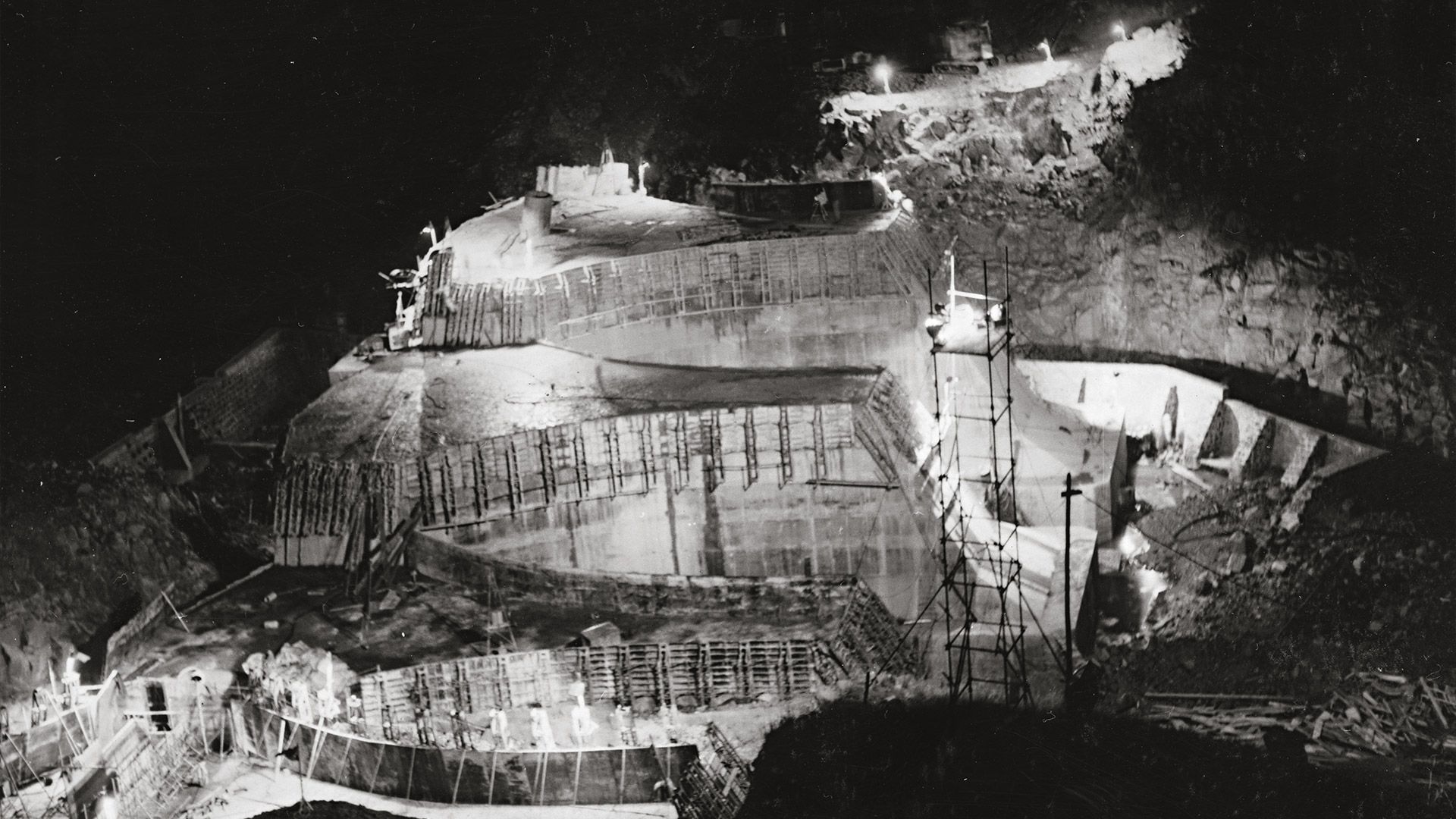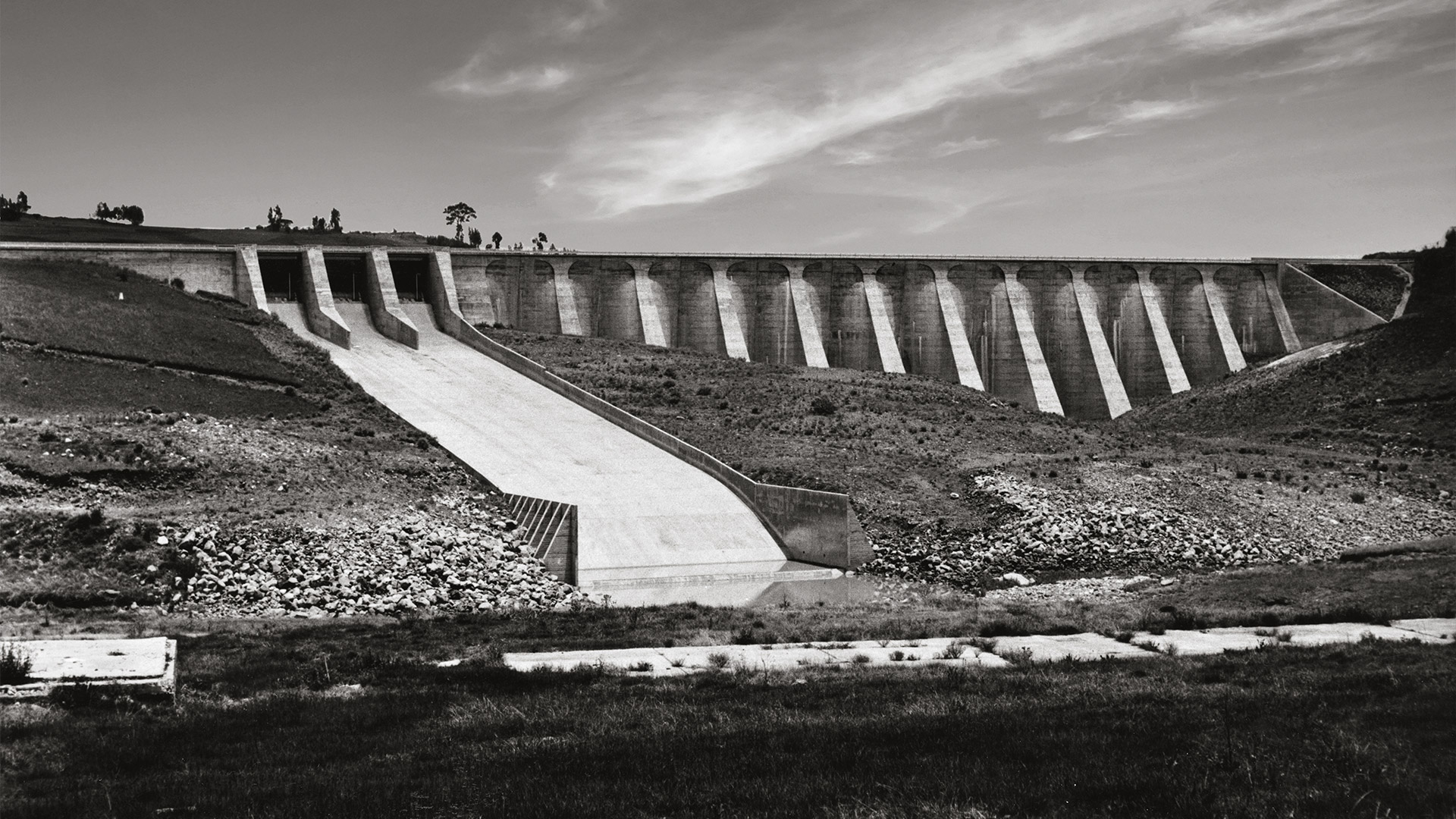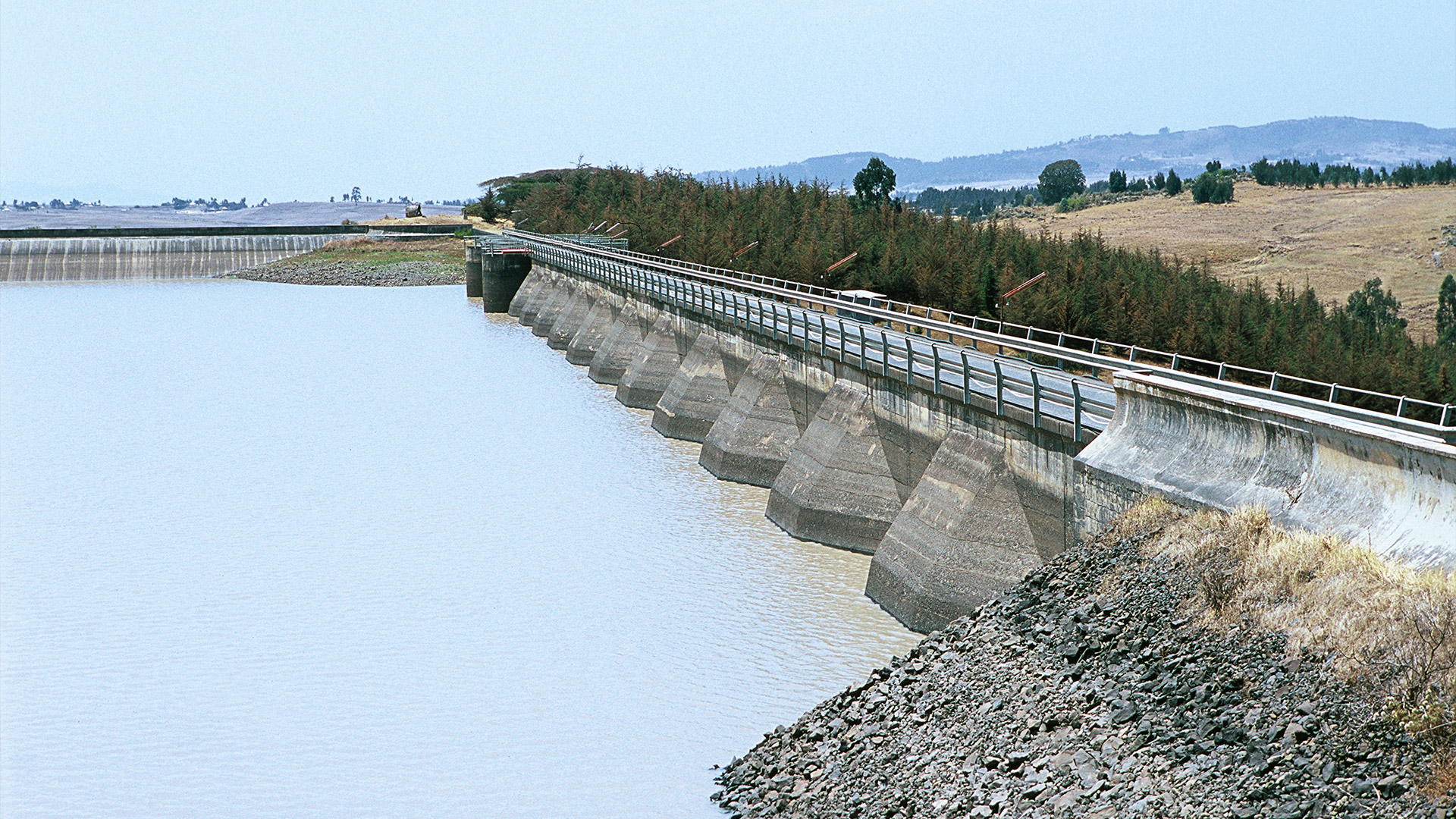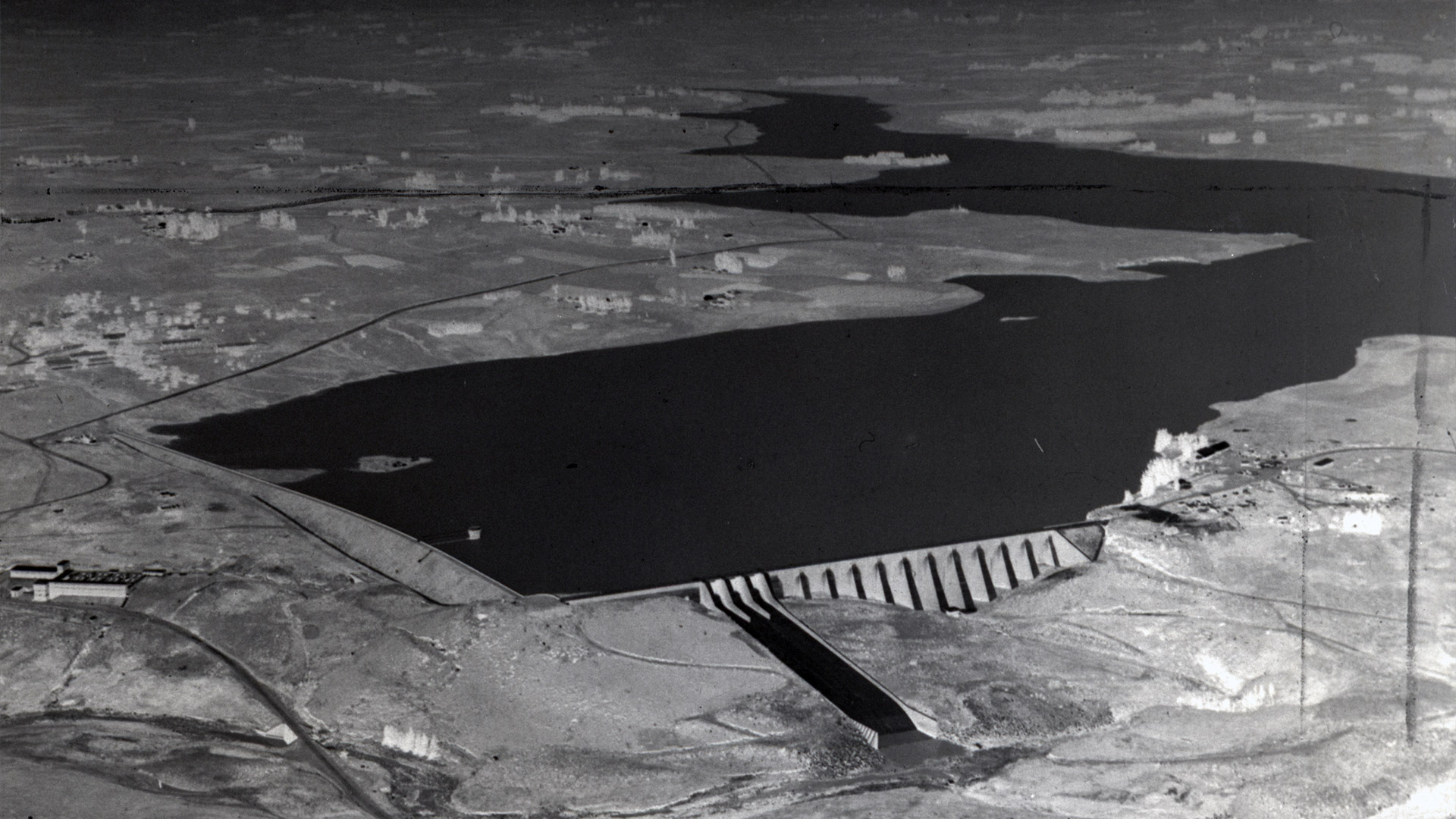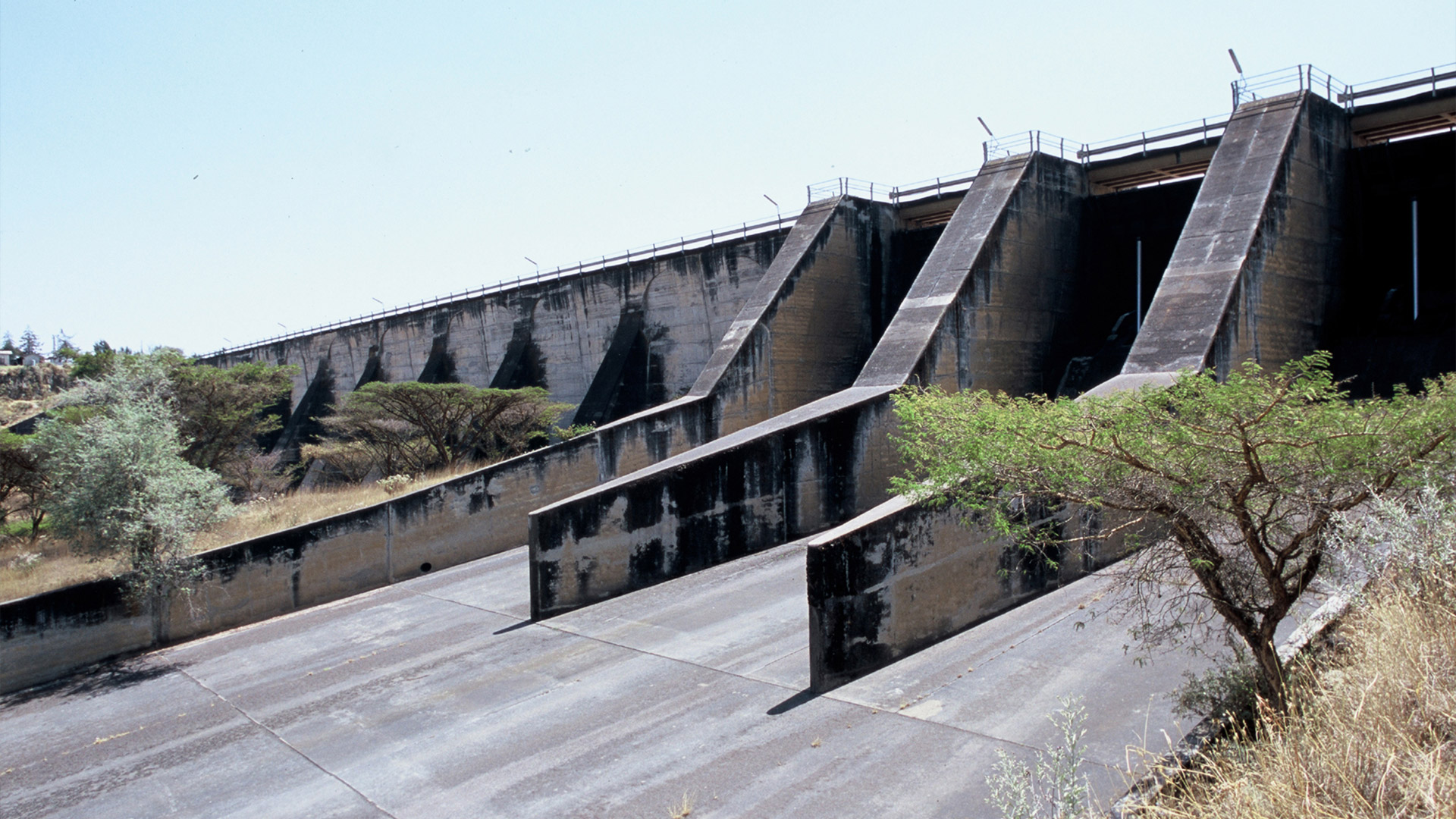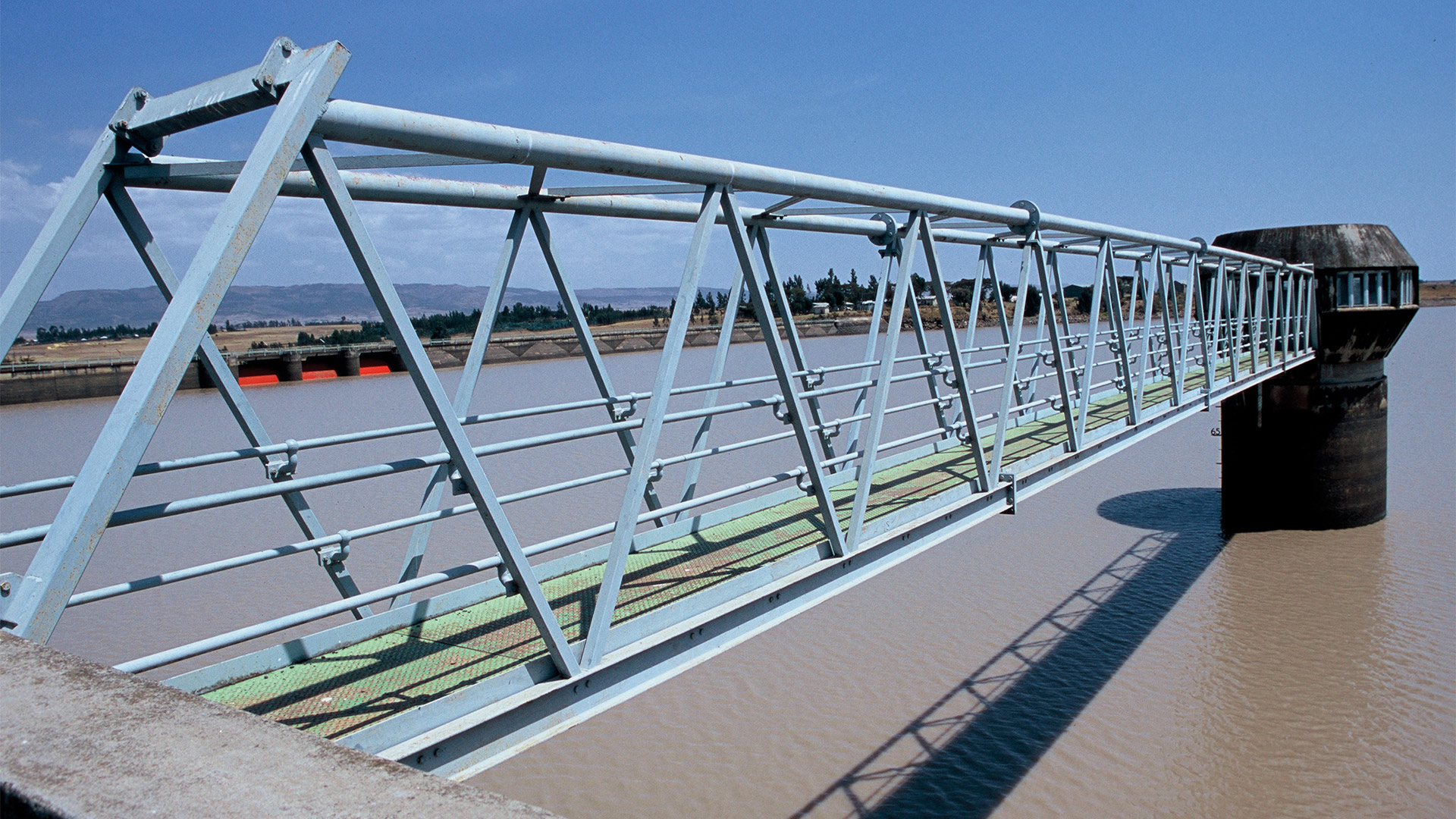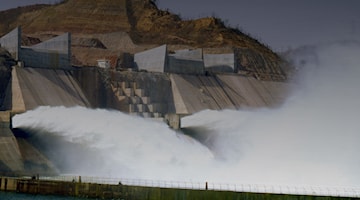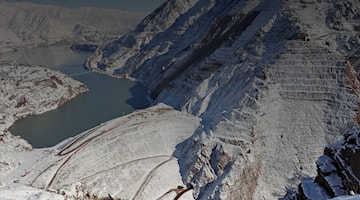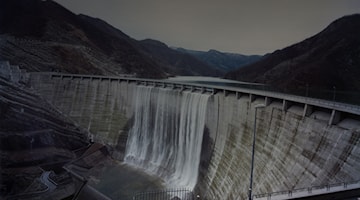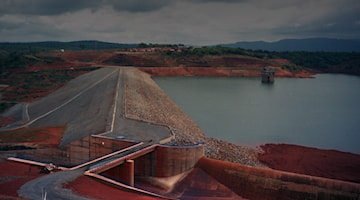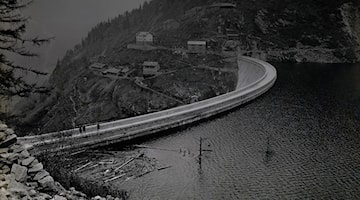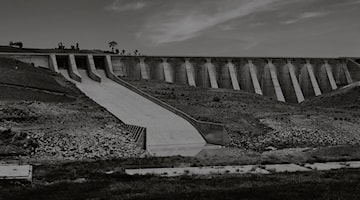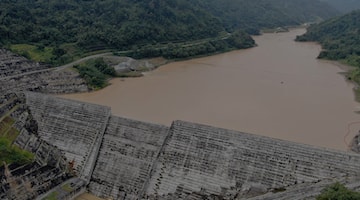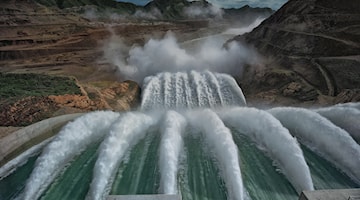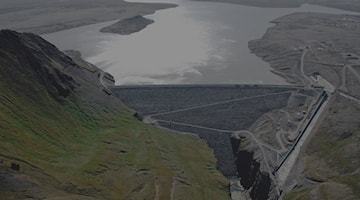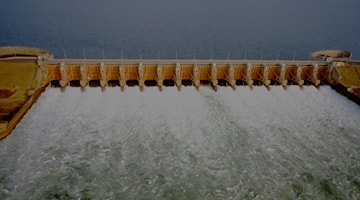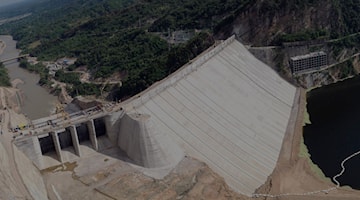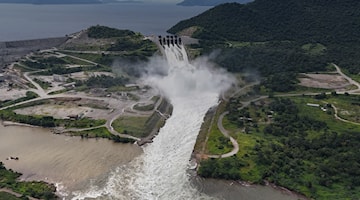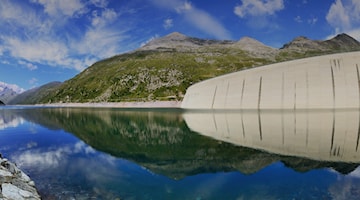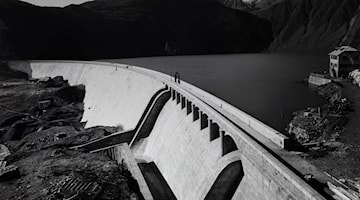Within humanity's cradle
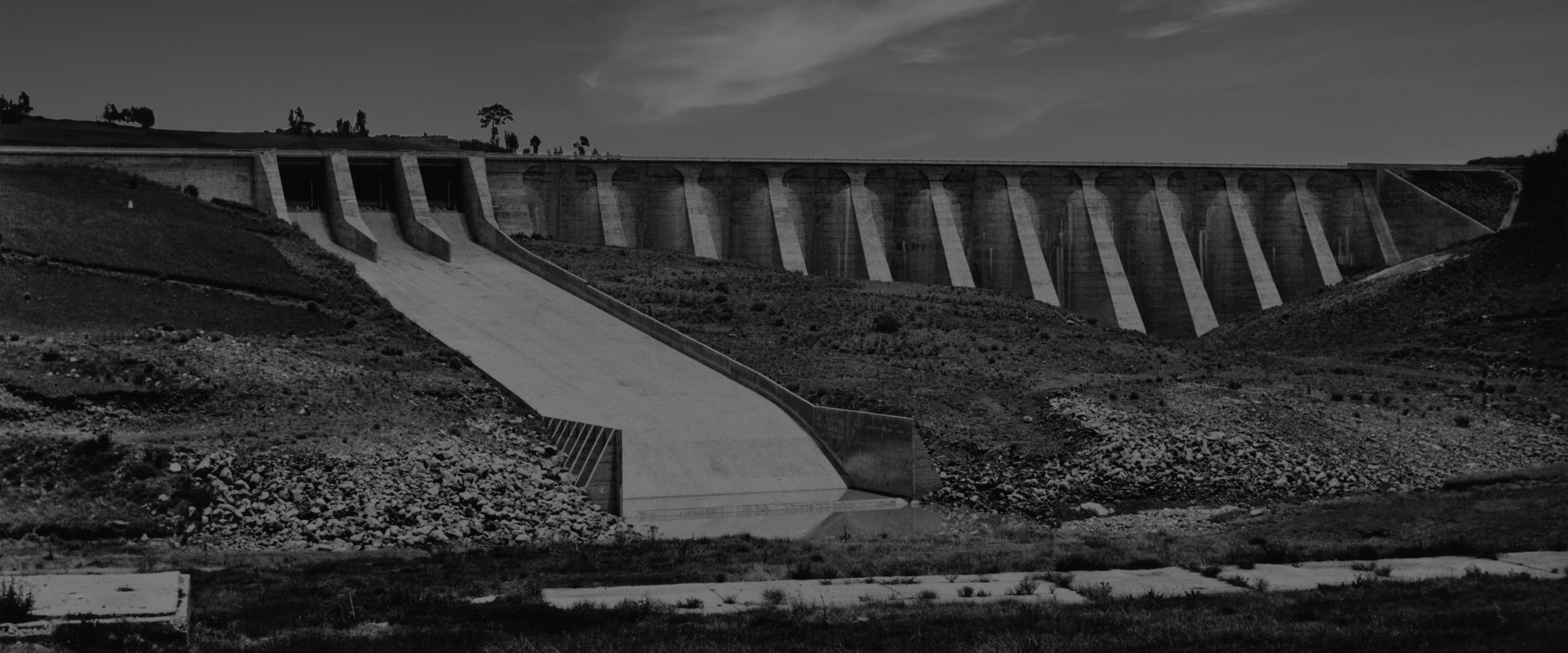
LEGADADI DAM, ETHIOPIA
Ethiopia (from the Greek word Aithiopiaa, which means burnt face) is the cradle of humanity. It is here that in 1974, a young anthropologist found a small skeleton belonging to a hominid who was 107 cm tall. It was Lucy, man's most famous ancestor: a female Australopithecus who 3.4 million years ago walked, in a standing position, these territories. Judging from her fractures, she died by badly falling off a tree.
This fertile land, to this very day, has huge trees as tall as ten metres, which abound due to the predominant tropical monsoon climate of Ethiopia, also known as Africa's water tower, and from whose mountains springs the Blue Nile. Addis Ababa, its capital, is located on the mountain ranges near the Great Tectonic Trench. In 1961, it still ensured the water supply required by its 450,000 inhabitants, due to the works built during the Italian occupation, right at the feet of these mountains. In 1967, though, due to the demographic boom, its inhabitants already amounted to 680,000. A figure that, also with the run towards modernisation, made it extremely important to make the abundant water present on the mountains available. Ethiopia's municipality, therefore, commissioned the construction of a new dam. It was completed between 1967 and 1971, with a 40 million cubic metre reservoir and a water treatment plant for drinking water capable of treating up to 50,000 cubic metres of water per day.
Inaugurated on November 3, 1970, by Emperor Hailé Selassie, to this day it still supplies 70% of the water needed by Addis Ababa. It was of fundamental importance for accompanying this demographic growth, which in 1970 brought the city to having 800,000 inhabitants. The inhabitants currently amount to 5 million (if all urban agglomerates are considered), with the majority not having yet reached 25 years of age. A perfect age for the citizens of a city, Addis Ababa, which in Aramaic means new "bud", and that was founded in 1889 by Emperor Menelik II.
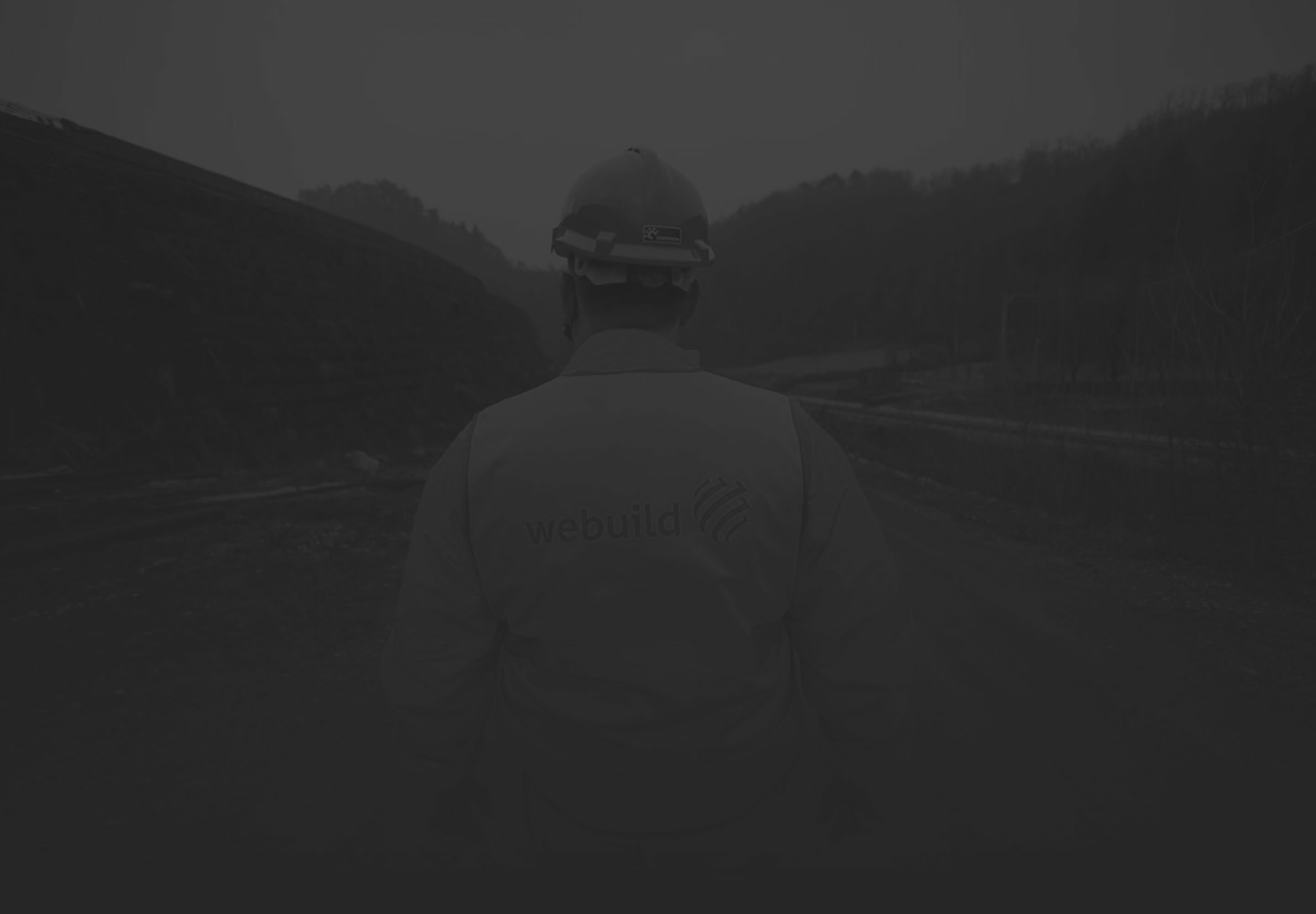
THE WORK AND THE TECHNIQUE
M3 ARTIFICIAL BASIN CAPACITY
M3 DAILY DRINKING WATER SUPPLY
Municipality of Addis Ababa
Salini Costruttori, now the Webuild Group
At the beginning of 1965, when the Town Hall of Addis Ababa began looking for new water supply sources, a feasibility study done by Salini Costruttori, later merged into the Webuild Group, identified the Legadadi basin as the construction site to be used to build the dam that would regulate the water flow of the Sendafà River, an affluent of the Legadadi.
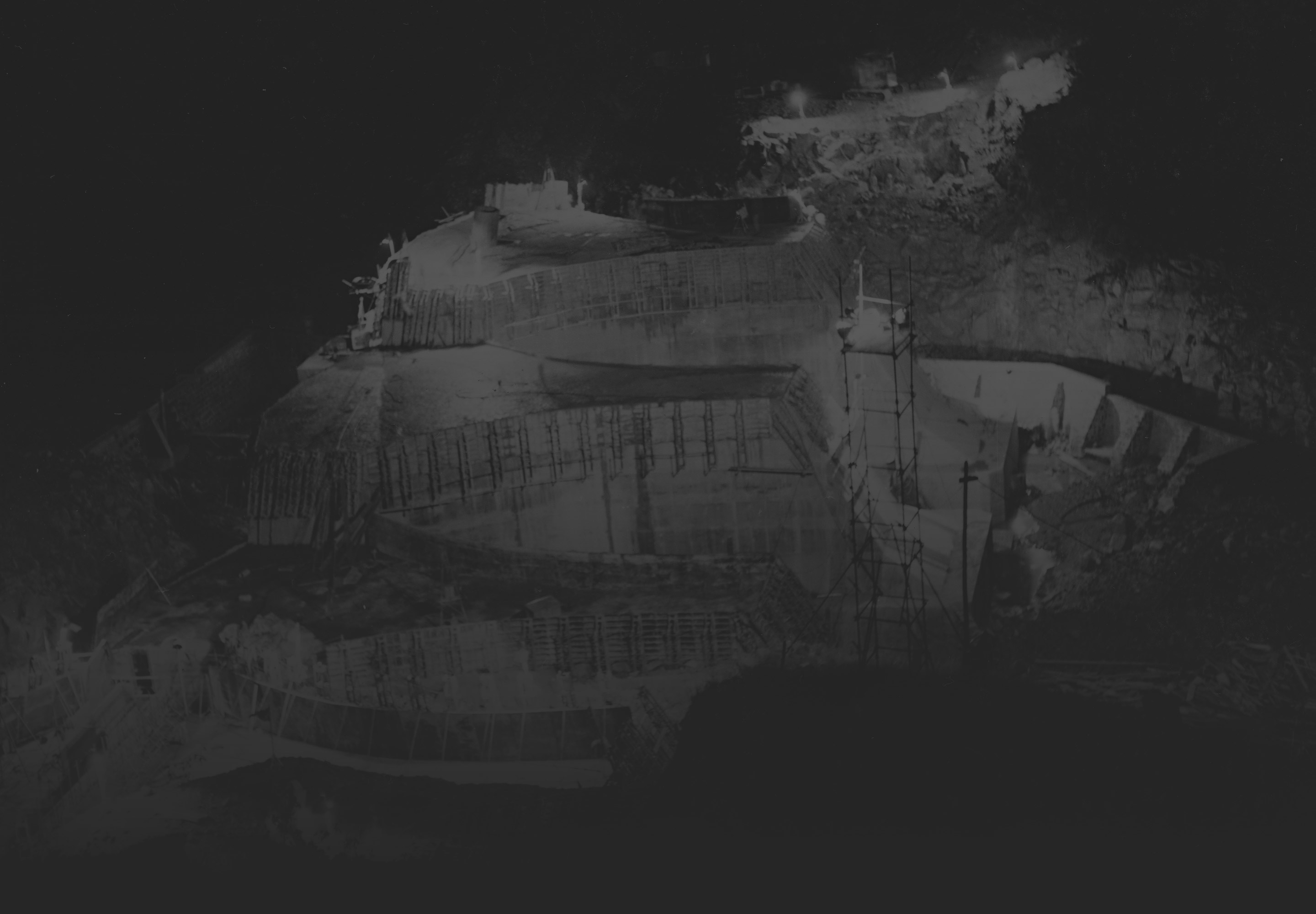
CULTURAL INSIGHTS
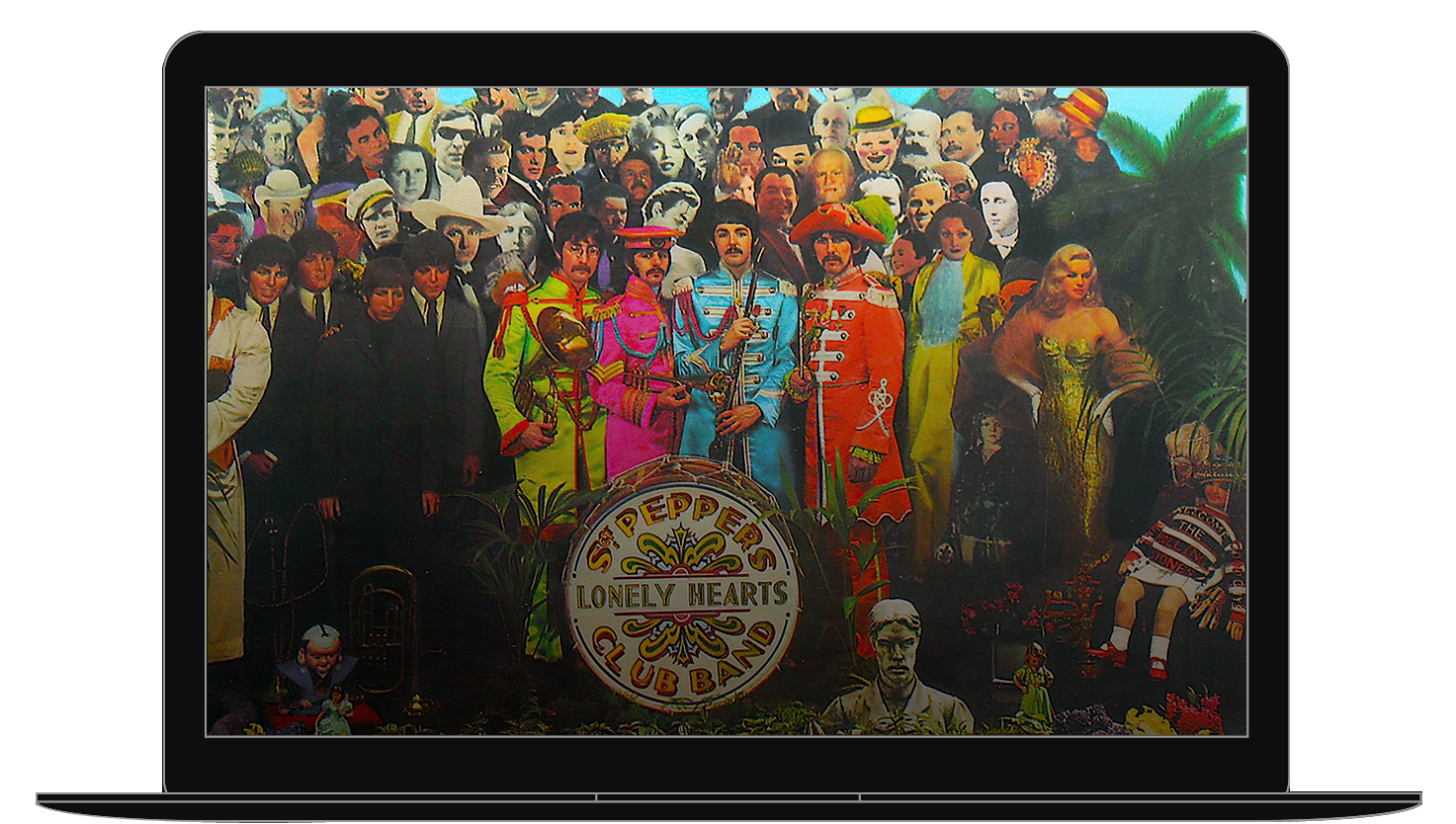
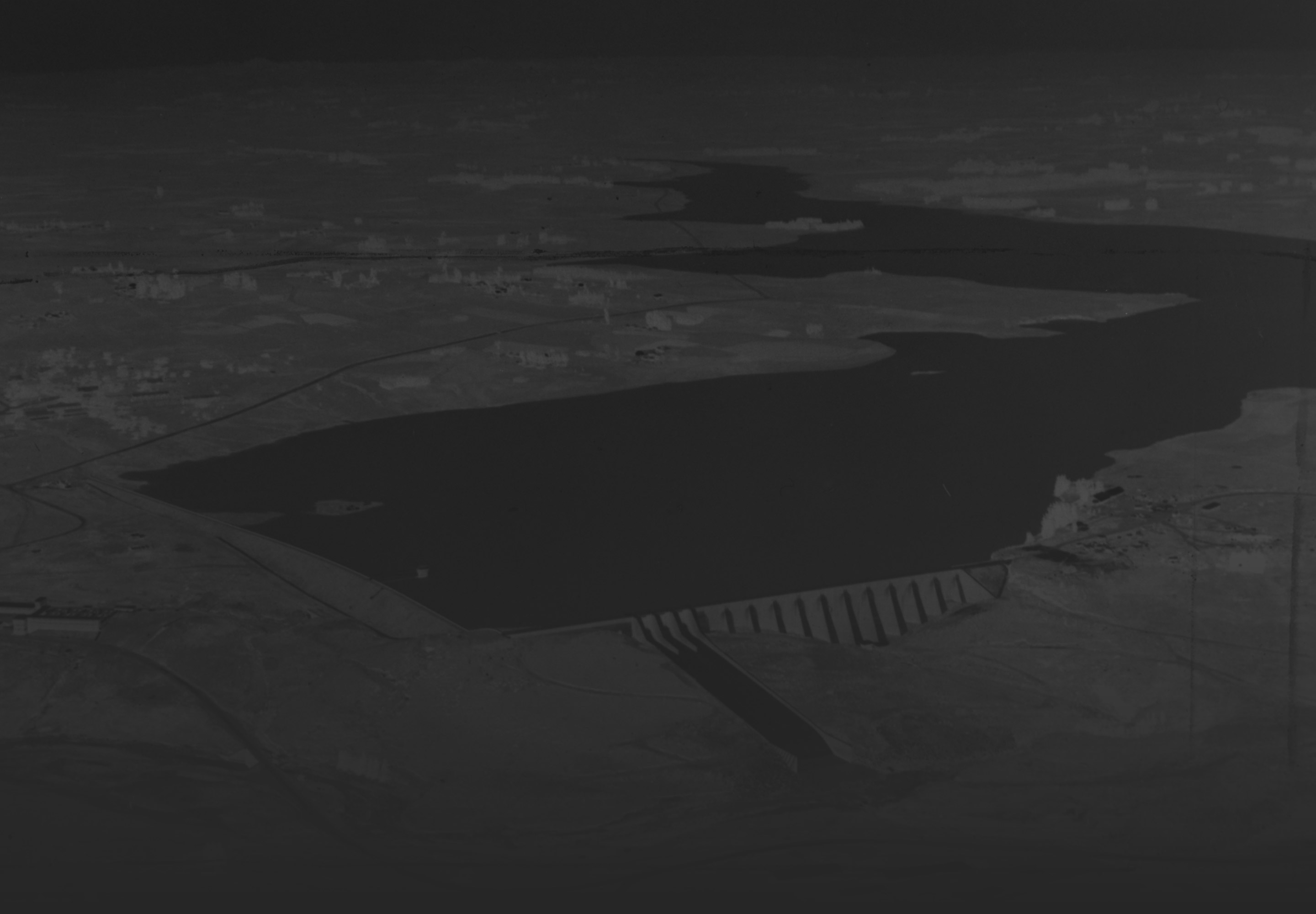
A huge access to drinking water
The Legadadi dam is one of Ethiopia's first post-colonial water infrastructures. Besides modernising the energy production system and the way water resources for irrigation and civil purposes are managed, the dam's main goals were to meet the great water need of Addis Ababa, whose population, in the 10 years it took to design and build the dam, increased by 77.7%. Moreover, the Legadadi dam offered solid infrastructural foundations to hugely access drinking water.
Thanks to public investments and the development policies carried out in the last two decades, the population percentage that has now access to it has significantly grown in all Ethiopia's urban areas. In fact, the data in the Joint Monitoring Programme report, a programme promoted by the OMS and UNICEF for 2024 shows how 97% of urban areas are now covered by drinking water, with a steady year-on-year increase in the percentage of the population with access to basic drinking water sources (in 2022, 83% of the urban population)..






